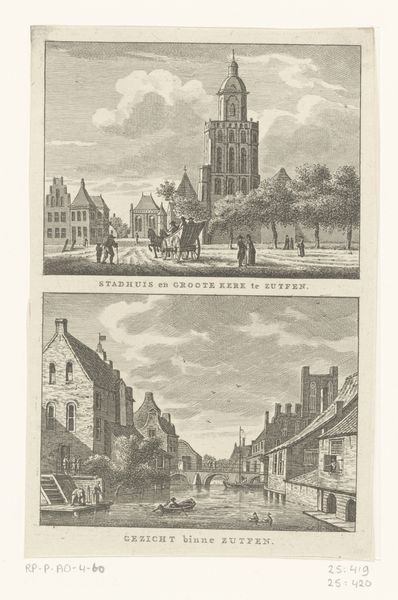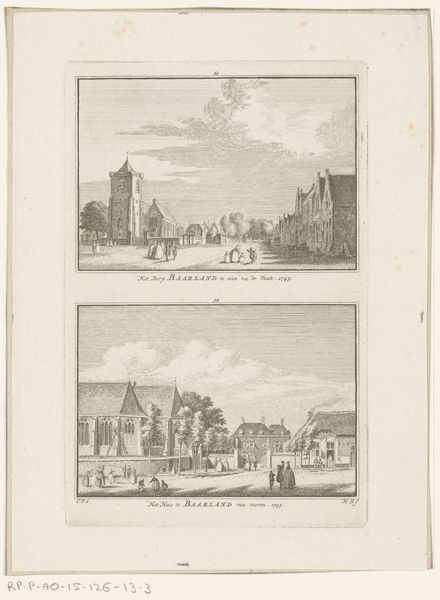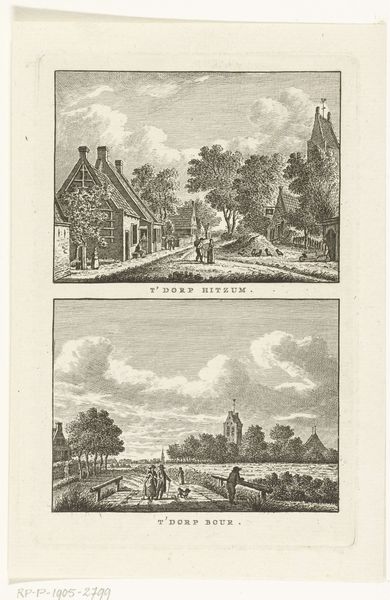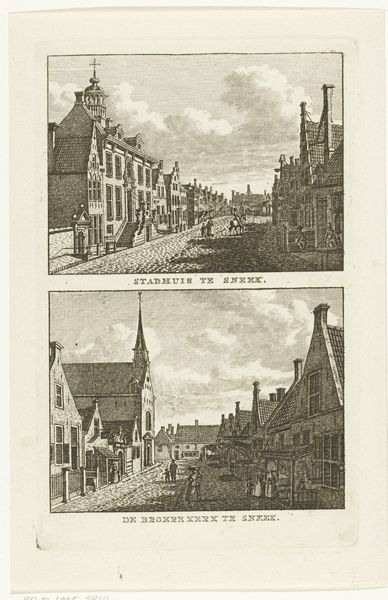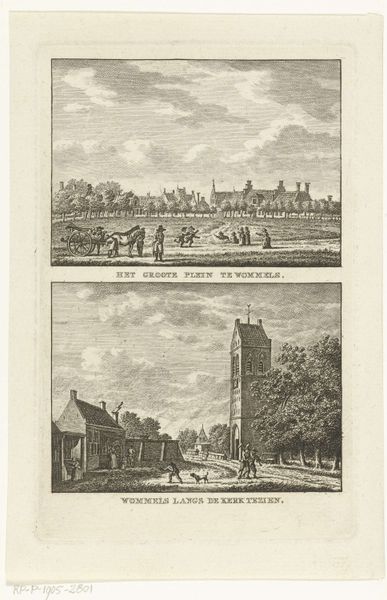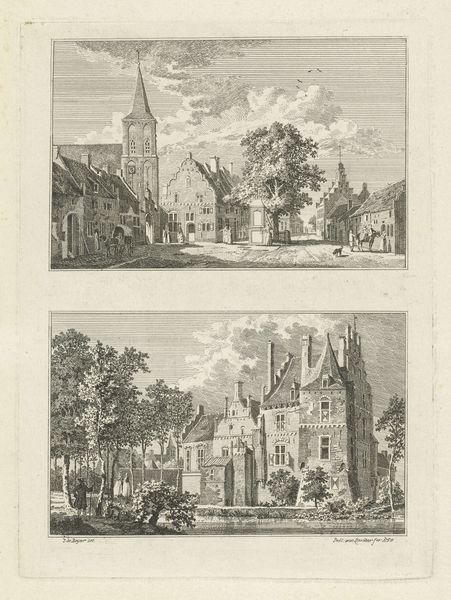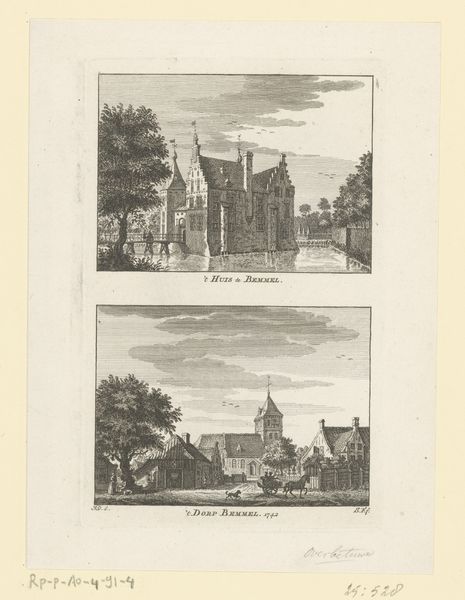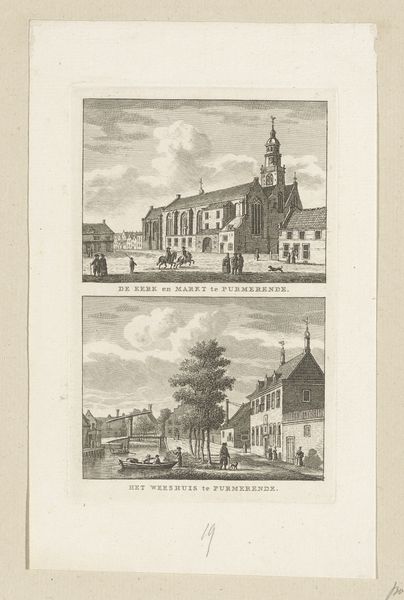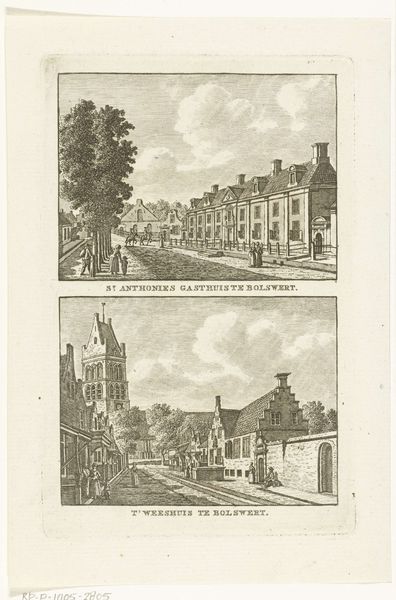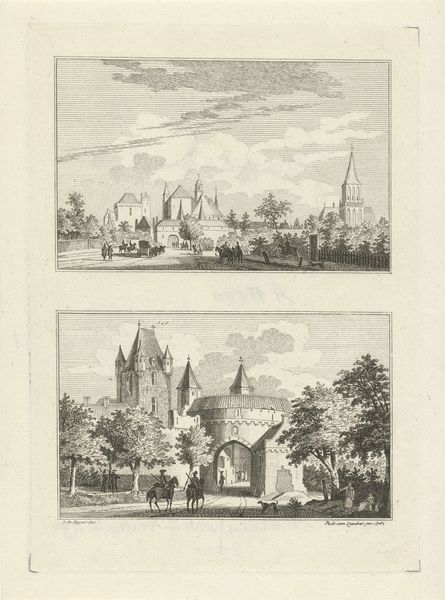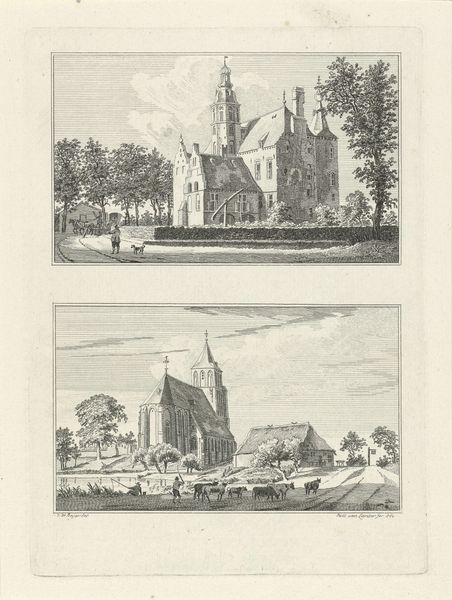
print, engraving
#
neoclacissism
#
dutch-golden-age
# print
#
old engraving style
#
traditional media
#
landscape
#
cityscape
#
engraving
Dimensions: height 171 mm, width 110 mm
Copyright: Rijks Museum: Open Domain
Editor: So, this print from somewhere between 1786 and 1792 by Carel Frederik Bendorp (I) is called *Twee dorpsgezichten te Tjum en Dongjum* which translates to Two Village Views in Tjum and Dongjum, if my Dutch serves me correctly. Looking at these finely engraved scenes, I get this profound sense of tranquility and the quiet, almost uneventful passage of time. What stands out to you? Curator: Well, that stillness speaks volumes, doesn’t it? Bendorp offers us more than just landscapes; they're like time capsules, revealing the unhurried rhythm of 18th-century rural life. Notice how the artist juxtaposes the village scenes – the bustling, if I may say so with a bit of irony considering the peaceful air, street of Tjum versus the pastoral calm of Dongjum with its grazing sheep. It's a curated contrast, prompting us to consider our own connection to the landscape. Editor: Time capsules, that’s a great way of describing them! Do you think Bendorp was trying to idealize these villages? Curator: Possibly! He presents these scenes with such careful detail and light that it leans towards a serene ideal. Maybe Bendorp sought to capture the essence of ‘Dutch-ness’, in a moment before immense political changes happened. Each etching, whether town or countryside, evokes a yearning for simplicity. It seems like the landscapes hold a certain wisdom that outlives us all. Editor: That's a perspective I hadn't considered! I came in seeing quaint villages but now appreciate Bendorp’s intention to reveal the tranquil nature of 'Dutchness,' before larger transformations began. Curator: Indeed, and it all goes to prove that within art, beyond technical mastery, the ability to stir empathy and thoughtful pondering marks the truest success.
Comments
No comments
Be the first to comment and join the conversation on the ultimate creative platform.
